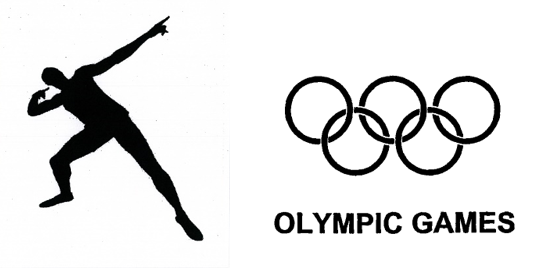The Importance of Intellectual Property in Sport

From club logos to lucrative sponsorship agreements to new streaming platforms, the role of intellectual property is self-evident and significantly important in the world of sport. Our Intellectual Property team considers the key IP assets available to rights holders in the sporting world as well as opportunities for further commercialisation.
As demonstrated by the recent Women’s Football World Cup in Australia and New Zealand and the Men’s Rugby World Cup in France, nothing quite like sport can really grip the attention of a nation. With that, events like these represent significant marketing opportunities and indeed market value for both individuals and companies. Having appropriate intellectual property protection in place is therefore fundamental in the business of sport. Whilst effective registrations, merchandising and co-branding arrangements can increase visibility and market share for the key stakeholders, if IP rights are not adequately protected, sporting events like these often lead to IP assets being infringed.
Why IP?
IP rights encourage more innovation and creativity by ensuring that creators and inventors are rewarded for their work. They also protect the goodwill held by brands and allow rights holders to prevent third parties from copying or using their IP without their permission. By encouraging innovation and creativity in sports, IP rights provide access to a continuous flow of new methods of enhancement of performance and consumer enjoyment. By way of example, technological aids to assist officials are now common in most sports, from VAR in football and DRS in cricket to the use of hawk-eye technology in both GAA and tennis. We consider the key IP assets available to rights holders in the sporting world.
Patents
Patents provide an important means of protecting innovative sports technologies. For example, Nike have filed numerous patents for inventions relating to running shoes. Other tools that improve data analysis and spectator experience such as virtual reality and augmented reality may also qualify for patent protection. As patent protection is not indefinite in duration, innovations like these also become valuable to the general sporting public, as technology which is often created firstly for sports stars and athletes, later reaches the general population.
Trade Marks
Successful sports players and sports teams regularly file trade mark applications for their names, likeness and logos. These can then be licensed on clothing and other types of merchandise such as key rings, fridge magnets, bottle openers and stickers.
In the world of football, Cristiano Ronaldo, Kylian Mbappé and Lionel Messi have all recently registered trade marks at the EUIPO. The latter famously became embroiled in a trade mark dispute when an application for his name and logo was opposed by a cycling brand based in Spain which held an EU trade mark (EUTM) for the word mark MASSI. The case ultimately proceeded to the Court of Justice of the EU (CJEU). The CJEU held that Lionel Messi’s reputation was so well known in Europe that it did not need to be demonstrated, and his trade mark application was therefore entitled to proceed to registration. More recently, a General Court of the EU decision involving the DIEGO MARADONA EUTM demonstrates how the heirs of a deceased sportsperson can continue to exploit and commercialise registered trade marks. In the world of motor sports, Lewis Hamilton has not quite been as fortunate as Lionel Messi and has recently faced difficulties with registering his name as a EUTM. In a decision in October 2023, the EUIPO Board of Appeal recently held that his EUTM for LEWIS HAMILTON covering Class 14 goods and Class 35 services conflicts with the well-known watch maker’s trade mark ‘Hamilton.’ That being said, Lewis Hamilton has previously registered an EUTM for his name and logos for a wide range of other goods and services including clothing and footwear in Class 25 and games and toys in Class 28.
Not only footballers register their trade marks. Michael Jordan previously successfully registered his Air Jordan logo and the famous sprinter Usain Bolt has obtained a EUTM for his well known lightning-bolt celebration pose. In addition, regarding sports events themselves, the Olympic Games is another example of how trade marks play a key role in the world of sport. Not only is the sign “Olympic Games” registered as a EUTM, but the images of the five Olympic rings, the torch, the emblems and the medals are all also registered.

Designs
Designs can protect two-dimensional and three-dimensional shapes of sports products. They are valuable for protecting the look and feel of clothing and equipment, as well as the interfaces on electronic products. As the owner is granted exclusive rights over the registered design, they are hugely important for preventing imitations and counterfeit products.
Copyright
Copyright law protects the visual content of sporting events. This refers the recording of the sports performances and their broadcast. It also subsists in software and apps relevant to sports such as Strava, for example. Regarding broadcasts, media companies and television channels invest significant sums to obtain the exclusive right to broadcast major events, given how far they will reach and the revenues they will inevitably generate from advertisers. For this reason, it is perhaps unsurprising that TV companies and tournament organisers frequently take legal action against copyright pirates and unlicensed broadcasts of sports events. Legal action is also often taken against gambling companies and third parties which use protected data or databases without authorisation.
Future opportunities
As the value of sports business continues to increase globally, so do the opportunities for rights holders to commercialise their IP. For example, the recent surge in the popularity of e-sports and gaming will undoubtedly present new opportunities to many. In addition, opportunities may also present in the Metaverse. Rights holders need to consider how best to protect their rights in those new and unfamiliar environments. When considering a rebrand or a new product launch for example, rights holders in the sports industry should consider the following:
- Which IP assets apply to their activities and if more than one form of protection might be available ie trade marks, copyright and design protection could be available for the same product or element of packaging
- The key territories where they plan to use their IP in the short to medium term
- The importance of carrying out IP clearance searches and seeking expert advice before launching a new product or service or before entering a new territory cannot be overstated and will often avoid subsequent costly disputes with existing rights holders
For more information and expert legal advice on how best to protect your intellectual property rights, please contact a member of our award-winning Intellectual Property team.
The content of this article is provided for information purposes only and does not constitute legal or other advice.
Share this:



